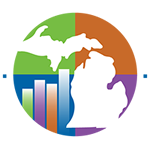What Is Content Strategy?
Content strategy involves identifying the type of content (words, photographs, graphics, forms) that will best help you communicate your department’s most important messages and achieve your department’s goals.
It combines writing, organizing and prioritizing copy and placing it in a navigational structure that will guide users to what they seek on your site, and what you want them to find and do on your site.
Questions to Ask as You Develop Your Content Strategy
- What is the goal of your site? What strategic objectives of your department are you expecting your site to help accomplish?
- What are the key themes and messages you want to convey – both about your department and the university?
- Who are your most important audiences?
- What do those audiences seek on your site or your pages? What do you want them to find?
- Does your existing content address your site‘s goals as well as what your audiences want to see and do on your site?
- What is the most important content on your current site or pages, and is it easy to find that content?
Helpful Content Strategy Tips for Your Web Pages
After creating or editing for your site content that conveys your department’s or program’s key messages and serves the needs of your audiences, there are several follow-up steps to ensure your website is effective.
- Keep it simple! Avoid complex layouts… just because you can doesn’t mean you should. Simple paragraphs and bullet lists go a long way.
- Review your Search Engine Optimization (SEO) tool. Web Services has provided editors with a tool (Yoast SEO) to help them review the quality of their content, as it relates to search engine discovery and ranking. While this tool may not be effective 100% of the time, it is helpful as a personal review for keyword(s), title, description, photos, heading tags.
- Review your content at least once a month. Websites that retain their audiences require fresh content.
- Make your content web-friendly by adjusting writing style. Offer small chunks of information that are easily digestible by readers with short attention spans. Structure your page to facilitate scanning and help users ignore large portions of the page in a single glance. Use multiple columns, grouping (text blocks) and sub-headings to break long lists into smaller units.
- People don’t read Web pages people scan Web pages. Several studies support this premise. Web usability gurus John Morkes and Jakob Nielsen found that 79 percent of test users always scanned any new page they came across, while only 16 percent read word-by-word.
- Review your website’s traffic. Contact Web Services to request analytics access. Examine the traffic flow through your web pages. Try to figure out what is effective or helpful content and what can might improve your web visitors’ experience. Don’t just look at page hits, but review visitor flow. Verify visitors are achieving the goal you established.
- Fix broken links and spelling errors. Contact Web Services to request SiteImprove access, which will provide a list of pages and documents which contain possible broken links and spelling errors.
- Drive traffic to your pages. Consider various marketing vehicles, such as email newsletters, printed materials, advertising, etc. A direct link to your pages from the home or landing page should not be the only way to find your departmental pages. Add links to a key page or pages in your email signature. Add events to the calendar, with links to your program‘s web pages. Create news about exciting happenings, awards, promotions, student activities, etc., relevant to your department or program. Utilize social media to increase exposure of your web pages. Share relevant/timely web page on your social media sites.
- Include multimedia. Once your core content is in place, consider additional types of content to give your audiences a fuller experience and keep them coming back. Examples: video, slideshows, “ask a question,” “share your story.”

